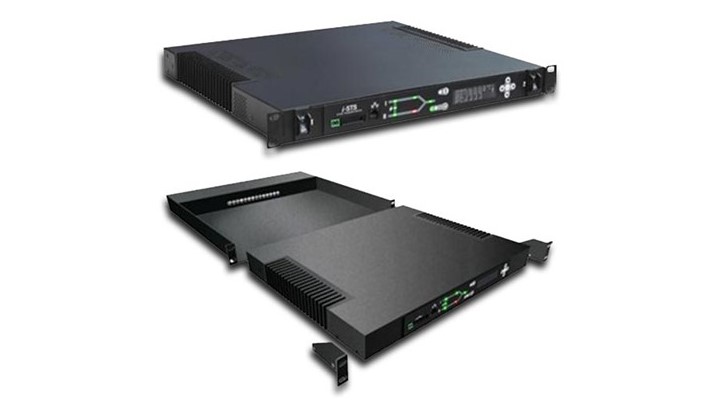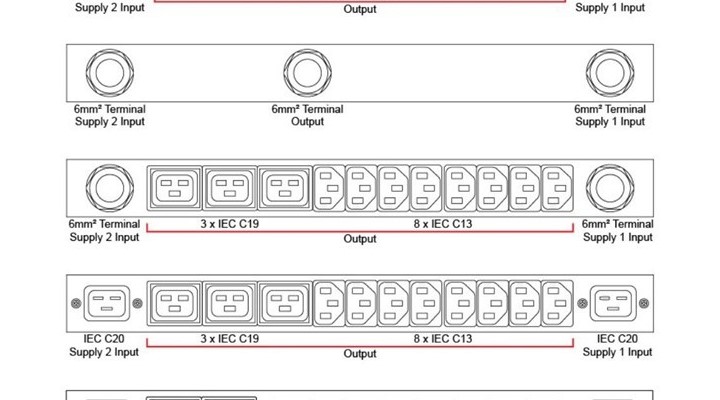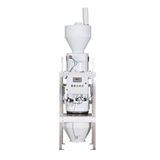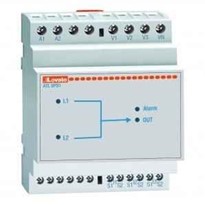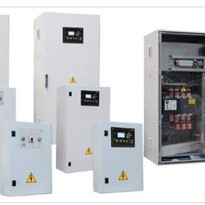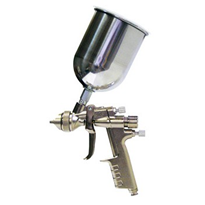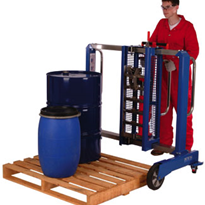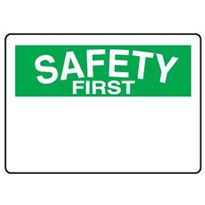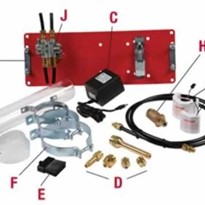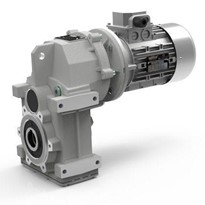This is particularly true for one class of STS/ ATS. The 19 Inch Rack Mount type
Here’s a too familiar scenario:
So you’re an IT specialist / Data centre manager and you’ve identified a problem which you probably weren’t aware of until the inevitable happened with the failure of your UPS or batteries or was it that someone turned off the wrong breaker within your power distribution system?
Now realising that you have a problem and that you are vulnerable, you jumped straight onto the internet for a solution. A solution that would protect against loss of power by transferring your critical loads to an alternate source should the one normally supplying that piece of equipment fail.
There was no end of solutions at hand. They all seemed to do the same thing.
Some from very reputable and well-known brands. In fact, many of them had a very similar thing. And they all professed at sorting out your power loss issues. They all had a good look and feel and were affordable. Technical specifications might have left something to be desired, but after all how much else do we need to know?
You already knew the distributor too I bet.
So you bought one, put it on the bench and ‘Yep’, seemed to do what was intended. The PC you connected up to it kept working.
Then you bought a whole bunch more and you were probably feeling quite satisfied believing that you were now fully protected.
Many months latter, there was another incident that caused a power outage to your critical equipment and you found that for the most part a lot, even most of the equipment that you had installed a device to survived.
Some did not. Some failed completely. This caused many unintended repercussions.
This is a typical scenario that we hear over and over again.
How do you go back to your management and ask them for more money for a better device to replace the inferior cheap products that you originally decided on?
Yet you need a more reliable solution. Because that shutdown hurt the company, the bottom line and your reputation. You look bad as you went cheap. Often a penny saved is a penny lost.
Later you find that there was little sympathy from the retailer/supplier and then you find out that they didn’t even know or understand the occurrence or any limitation in their supply of equipment.
That’s because they aren’t the specialists. Typically they’re only interested in selling UPS, product and ancillary services.
You need an experienced expert in Static Transfer Switches. A company that focuses only on this product alone.
A STS/ATS primer… So you won’t be embarrassed.
A Static Transfer Switch is also often described as a “Solid State Static Transfer Switch” or” Solid State Transfer Switch”, STS or SSTS.
Too often it would seem that decisions are made on price and the Australian and international expectation is that things are cheaper from China and that expectation is carried through to locally manufactured and exported products elsewhere in the world too. Although it is true that the rest of the world cannot compete on price with Chinese products and often Chinese product look and feel as though it would do the job. In fact after purchasing products ourselves and putting them to the test it initially looked like they did what they said, however, looking a bit deeper into the products often revealed something different, something, typical of China engineered and manufactured product.
This discussion provides insight into one of the categories of STS and its derivations associated with “Rack Mount”, “point of distribution type” ATS/ STSs.
This class of STS are usually rated at 16, 25 or 32 Amperes and are 1 RU or 2 RU high and are accommodated into the equipment rack to protect usually single corded power supply equipments. They are referred to as “Point of Distribution” type as they are placed close to the load and this is great because they potentially protect against failures anywhere along the power distribution system up to the rack where they are installed. Any upstream failure or inadvertent switching should then be protected by the STS/ATS by switching over to another stand-by source in case of failure of the preferred.
The term ‘STS’ is bandied about by marketers of inferior products that they term STS but are just “Source Transfer Switches”. They are not a “Static Transfer Switch”, or “Solid State Transfer Switche”, however, the customer or end user can often be persuaded by the acronym. These “Source Transfer Switches” are inferior relay based products. They are not as reliable, rugged or sophisticated in their transfer / decision methods and componentry often causing failure or unpredicted operation.
Some manufacturers have similar products and refer to them as “Automatic Transfer Switch” or ATS. These are also inferior relay based products and are of the same configuration to the “Source Transfer Switches” referred t above. They are relay only based products.
There are also a number of STSs that are of the Hybrid type. These combine both solid state devices (Thyristors / SCRs), to undertake the initial change-over and are followed up by bridging relays. These units are always slower than a true “Static Transfer Switch” as they are limited by the speed of the electromechanical relays. They undertake this approach to reduce the manufacturing price, however, in doing so reduce your system reliability. Again, these are inferior to a true “Solid State Static Transfer Switch”, which has true ruggedness and reliability designed and built into it to provide the best protection for your critical loads. The Solid State Devices in these hybrid types are so small and cheap because they are short term rated. They also still incorporate relays for their main power paths.
So what are some of the limitations with these type relay/ hybrid devices ? They are cheaper!
Remember that your customer will thank you for providing them with a slightly higher priced product when you save them 1000’s of dollars by not loosing output and interrupting their operations.
We’ve bench tested a number of manufacturers STS/ATSs and we’ve found that they are vulnerable in the following ways. None such vulnerabilities exist in “Solid State Static Transfer Switches”.
Some of the things we found and you should consider are:
- Some do not have Preferred Source selection
- Contacts on the relay / Hybrid STS are prone to welding or blowing open and causing source to source issues as a result, affecting the whole data centre by paralleling sources.
- ATS/ Hybrid type have almost no over-capacity. i-STS have at least 200 to 400% continuous over capacity. This overcapacity improves the robustness and reliability.
- Relay ones have larger break times and vary depending on nature of the loss or sag
- Do not always work reliably if not in synchronism
- Can cause generation of voltage spikes as a result of breaking currents anywhere in the waveform. Solid State Transfer Switches always switch at zero current
- Have been shown to become unstable if supplies are changed / failed and returned too quickly
- Can under some conditions transfer to no supply
- Cannot protect against load faults except by transferring the fault or losing all output
- Most use voltage sensing only (No current monitoring ), and if there is a load fault and voltage is disturbed they transfer the fault to the other source, results often in loss of both sources.
- They look only for voltage failures and therefore can still send bad power to the load
- They transfer out of synchronism and provide a inrush to the loads this may cause issues for the loads
- Their break times are typically 12-35 msec (1/2 to 2 cycles) where as true STSs, has a maximum of 5 msec (¼ cycle max). Anything larger than 20 msec may cause issues for your critical equipment.
- They have no lock out so can continually transfer between the sources until they break
- They have no, or very limited smarts to allow for HLI monitoring or user settings
- Some units are unsafe for high power environments and could cause fires if fault currents cannot be broken (no fuses and /or limited KA capacity circuit breakers). True STSs are suitable and safe for fault currents to 20kA.
- Limited monitoring capability (discrete & HLI). Many don’t have HLI others don’t’ have volt-free contacts
- Many require proprietary software to interrogate or connect to HLI
- None or limited user settings
- No redundancy built-in
- Single points of failure
- Exclusively operated via microprocessor control therefore subject to erroneous operations or operate off discreet logic with no smarts at all, severely limiting exception operation when required.
- Limited choices for inlets and outlet configurations
- Some will not work 50/60 Hz and only pre-set international or European 220V AC voltages (pre-set)
- No hot socket field replaceable power module. No no-break change-over options
- No Maintenance Bypass options
- Some have 2RU and 3RU form factor making them take up more rack space than what should be necessary.
- Some are rated for 20, 25 and 32 Amperes at 20 or 25 degrees C and de-rate thereafter.
A True high quality Static Transfer Switch should have the following:
None of the limitations of the ATS/STS or Hybrid types as discussed above
- Use Thyristors and transfer at zero current crossover. The transfer time is typically < 1m sec but under worst case conditions can be up to 5msec (1/4 cycle)
- Units have generous overrated components utilize large overrated devices and 100 Ampere internal fuses. Therefore have generous overload and fault capability
- Are safe for installation into 20 kA distribution systems (check with your supplier).
- Easy to see and interpret user interface LEDs & LCD & LAN Server and SNMP built in (for Brower) & Modbus all built in including 5 discrete outputs and remote transfer control inputs
- Everything is settable by the user if required (password protected)
- Redundant voltage sensing of all inputs and outputs for both steady state and transient levels
- Triple redundant power supplies
- Up to 16, 32 Amperes, Naturally air cooled, (63 Force air cooled)
- Your choice of input output connections IEC, GPO, NEMA, terminals
- Will not transfer a load fault
- Will not disconnect the load even under fault conditions (only uses upstream protection)
- Thyristor /SCR open and short circuit protection
- Real time event recording via LCD including Variables, history, settings and status
- Independent internal controls for HMI and also LAN and control algorithm in Hardware
- Preferred source selection
- All surface mount technology
- No transformers inside
- Power components all double bonded soldered.
- Fail safe integrated control hardware (doesn’t rely on microprocessors)
- 2 Year warranty
Visit: http://www.staticpower.com.au/sts/rack-mount/i-sts-model-b1


